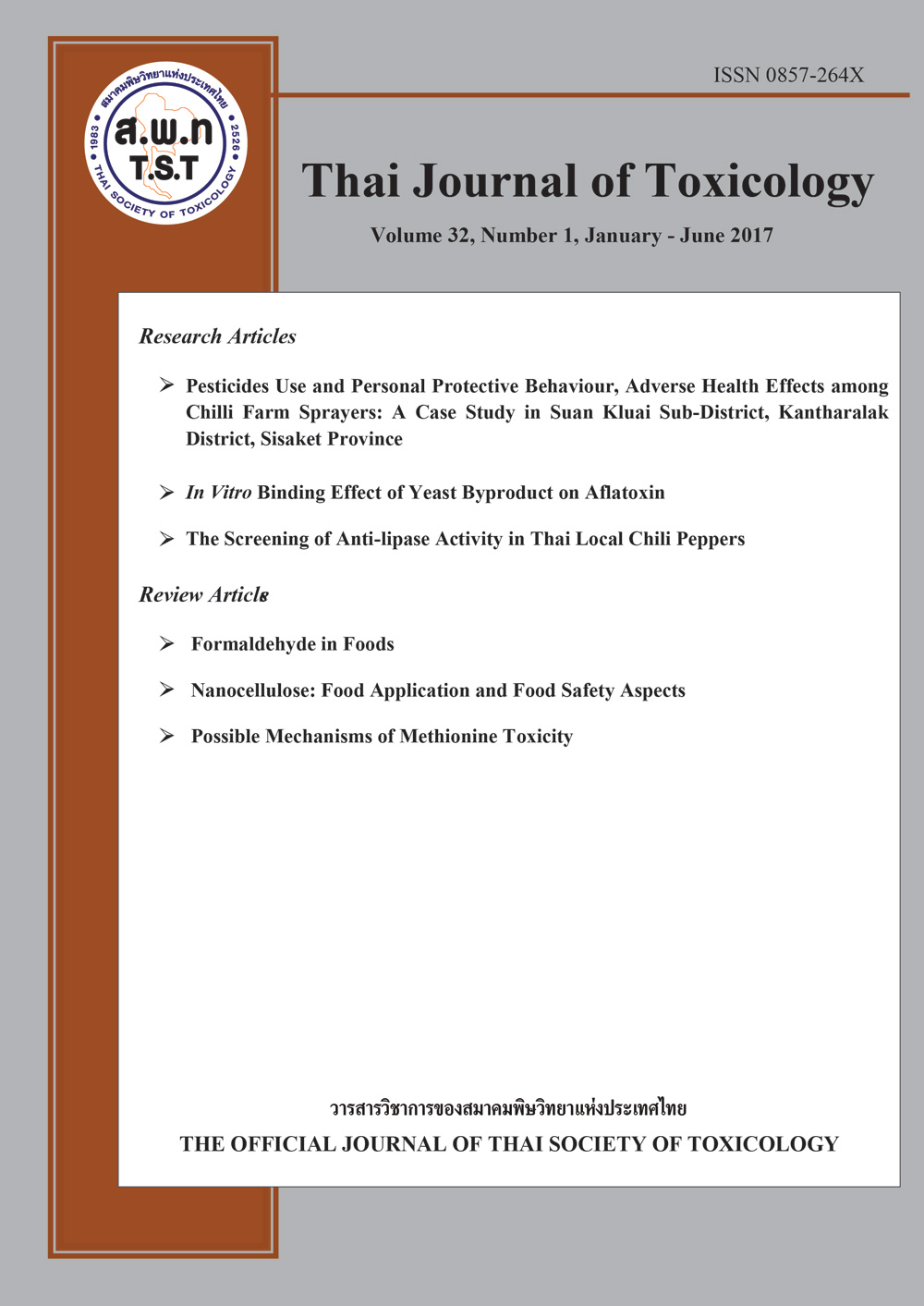The Screening of Anti-lipase Activity in Thai Local Chili Peppers
Main Article Content
Abstract
Obesity is a major risk factor of chronic diseases, leading to deaths of more than 10% of the global population. Medicinal treatment of obesity involves control of lipid degradation via inhibition of the key enzyme, lipase, which hydrolyzes triglyceride into glycerol and free fatty acids. Thus, the purpose of this study was to reveal lipase inhibitory activities of Thai local chili peppers (C. annuum and C. frutescens). All chili peppers were extracted by 70% (v/v) ethanol in a 60 °C water bath shaker. The anti-lipase activities were determined by colorimetric coupled assay using a 96-well microplate reader. Among all investigated chili peppers, the immature green bird chili (C. frutescens) was found to exhibit the highest anti- lipase activity (49% inhibition), while its mature red counterpart provided 36% inhibition. On the other hand, the mature red banana pepper (C. annuum) exhibited the lowest inhibition (8%), while its immature green pepper exhibited 13% inhibition. Overall, most immature green chili peppers tended to exhibit higher percentage of inhibition than their mature red counterparts, which might be due to different types of quantity of bioactive compounds found in particular chili peppers. Green bird chili with the highest lipase inhibitory activity was found to exhibit the higher content of ferulic acid, p-coumaric acid and sinapic acid than the red one. Besides, chili peppers in C. frutescens species tended to exhibit higher anti-lipase activities than the ones in C. annuum species. Therefore, the internal factors such as maturity and species may strongly influent anti-lipase reaction.


